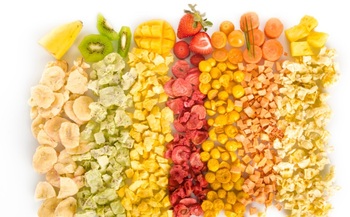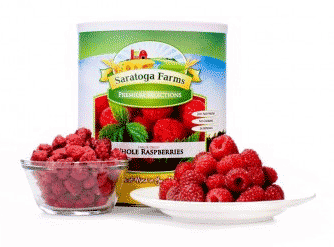Freeze-dried food has revolutionized food storage with its ability to stay fresh for 20–30 years. From fruits and vegetables to complete meals, this lightweight, long-lasting food option has become a favorite for preppers, backpackers, and campers. But how does freeze-drying work? Let’s dive into the process and its fascinating history.
What is Freeze-Drying?
Freeze-drying, or lyophilization, is a delicate process that dehydrates food by rapidly freezing it and removing up to 99% of its moisture. This makes the food resistant to bacteria and spoilage while preserving its structure and nutrients.

The process involves freezing the food, placing it on drying racks, and subjecting it to a rapid physical change that skips the liquid phase, turning ice directly into vapor.
History of Freeze-Drying Foods
The modern freeze-drying process began during World War II, when the United States needed to transport medical supplies like blood and penicillin to Europe without spoilage. This process preserved the chemical properties of these supplies while increasing their shelf life. Later, freeze-drying was adapted for food preservation, book restoration, and other uses.
The Freeze-Drying Process
Freeze-drying involves four key stages, which occur within specialized machines equipped with freeze-drying chambers, heating shelves, refrigeration coils, and vacuum pumps.
Pretreatment
Before freeze-drying, food is inspected for spoilage to ensure safety. Some foods are pre-cooked or concentrated to enhance their structure, quality, and yield, ensuring they retain their appearance, taste, and nutrition.
Freezing
In this phase, food is placed on shelves inside the freeze-drying chamber. The temperature is lowered to -58°F to -112°F, causing water in the food to freeze and separate from its molecular structure. Proper freezing ensures the food’s texture remains intact during drying.

Primary Drying
Once frozen, the chamber pressure is reduced to create a vacuum, initiating sublimation—the transition of ice directly into vapor. Heat is gradually applied to the trays, and the water vapor is collected on the refrigeration coils, preventing rehydration. This step preserves the food’s taste, texture, and nutrients.
Secondary Drying
The final drying phase removes residual moisture over several hours or days. Temperatures are slightly increased to evaporate the last traces of water, leaving the food with just 1-4% of its original moisture content. This ensures longevity and stability.
Sealing
After drying, the food is sealed in airtight containers like #10 cans or Mylar bags to prevent exposure to moisture and oxygen. Adding oxygen absorbers further extends shelf life, keeping food safe and ready to use for 20–30 years.
Benefits of Freeze-Drying
Freeze-drying is one of the best preservation methods available, allowing you to store your favorite fruits, vegetables, and complete meals for decades. Despite the tedious process, it ensures the availability of nutritious, ready-to-eat food in emergencies or for everyday cooking.










